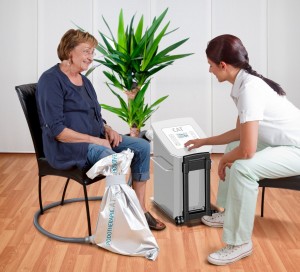Carbon dioxide, commonly known as CO2, is familiar to many as a fizzy addition to beverages. But as a component of our atmosphere, CO2 is essential for life on Earth. It’s also found in water (oceans, freshwater, and mineral springs). Used since antiquity as a “healing gas” for burns and skin problems, it continues to be utilized today in drinking and bathing cures for cardiovascular diseases and in dermatology.
A lesser-known effect of CO2, now supported by studies, comes from the use of dry baths (CAT, Carbonic Acid Therapy). CO2 has the ability to penetrate through the skin into the tissue and underlying vascular system, where it regulates oxygen supply. This results in improved blood circulation and dilation of capillaries (the smallest blood vessels). “This effect can therefore be used supportively in treating circulatory and wound healing disorders. Patients with neuropathies, diabetes, venous problems, leg ulcers (ulcers) benefit from it. This includes poorly healing areas post-surgery. Additionally, a disinfecting effect has been observed,” reports pain medicine specialist and neurosurgeon Dr. Reinald Brezovsky from Vienna*. In patients with Reynaud’s Syndrome (sudden circulatory disturbances of the fingers and/or toes, causing them to turn white), positive effects of CO2 applications have also been noted. The affected body part (arm, leg) or the entire body up to the chest/abdomen is placed in a plastic bag, which is sealed at the top with a belt. The gas enters through a tube and inflates the bag. Patients then comfortably lie inside for about 20 to 30 minutes (see photo). “In combination with high-tone therapy and healing red light, particularly good results can be achieved in wound healing. Patients also report feeling lighter, more energetic, and invigorated,” adds Dr. Brezovsky.
Kronen Zeitung, October 31, 2014 | Karin Podolak

